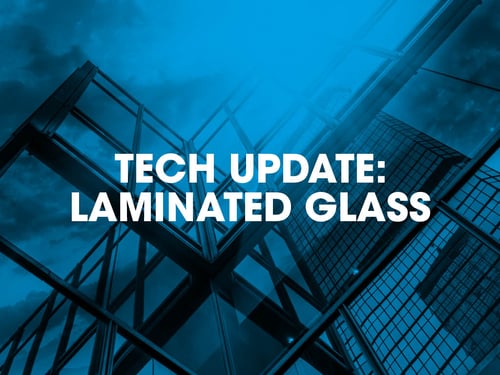Where is laminated glass used in buildings?
Laminated glass is commonly used in the following areas of modern buildings:
- Glazed windows and doors
- Rooflights and glass roofs
- Glass floors
- Glass stair treads and balustrading
- Balcony balustrading
- Glass partitions
- Where security or safety glass is required.
- Features such as decorative fins, structural fins, or solar shading
Are there any disadvantages with laminated glass?
Laminated glass is normally more expensive, as there are more processes and products involved in its manufacture compared to monolithic panes of the same size.
A laminated pane of annealed glass will normally be weaker than a monolithic pane of annealed glass of the same thickness. However, the laminated pane will retain some strength if it is broken, whereas the monolithic pane will not.
Similarly, due to the thinner plies used, a laminated annealed glass pane will be more susceptible to failure due to thermal stress than a monolithic pane of annealed glass of the same thickness.
Historically, de-bonding and/or discolouration of the interlayers was problematic for laminated glass, but the development of more UV stable, heat-resistant interlayer products together with better design and manufacturing techniques has mitigated most of these issues.
Laminated glass in residential buildings (and other “relevant” buildings) that exceed 18 metres in height
The amendments to the Building Regulations came into force in December 2018 and Section 7(2) requires that: “…materials which become part of an external wall, or specified attachment, of a relevant building are of European [combustibility] Classification A2-s1, d0 or A1”.
The regulation latterly determines that glass panes that are contained within window and door assemblies are exempt from the requirements of Section 7 Paragraph 2. It has subsequently been confirmed that curtain wall screens are to be considered as windows, too.
Balconies that are attached to an external wall are to be considered as a “specified attachment”. However, a laminated pane in a balustrade is not within a window or door frame so they are not exempt and must achieve classification A2-s1, d0 or A1. This was confirmed with our partner organisation LABC in an interview with MHCLG, which you can watch here (specific reference is made 3 minutes 55 seconds in)
Equally, laminated panes that are window spandrel panels and infill panels must comply with Regulation 7(2) – as clarified by clause 12.14 d) of the November 2018 amendments to Approved Document B, Volume 2.
Using laminated glass – a checklist
Design stage
- For relevant buildings that exceed 18 metres in height, check that panes in balcony balustrades, or that form infill/spandrel panels within windows and doors meet the requirements of 7(2) of the amended Building Regulations
- Ensure thermal stress checks are carried out when laminated panes containing annealed or heat strengthened glass are utilised
- Check interlayer type:
- Obtain confirmation of durability. Obtain data sheets and find out what warranties are being offered / provided for the glass panes or IGUs - particularly where EVA interlayers are being proposed
- When relevant, obtain confirmation of impact resistance classification of the pane or IGU
Construction phase
- Ensure products are correctly installed and that no product substitution has occurred, as this has the potential to negate the validation work carried out during the design phase

